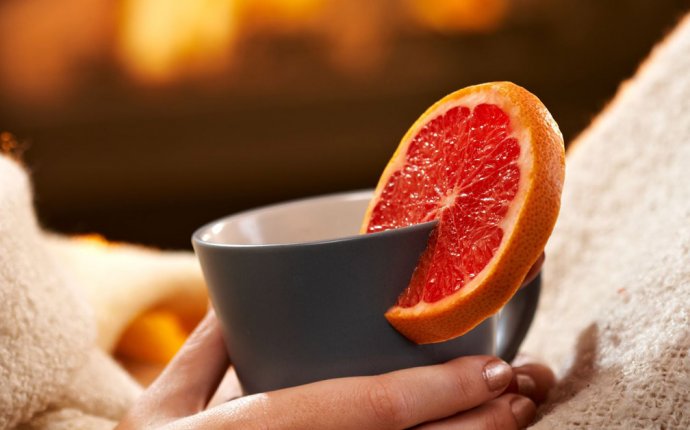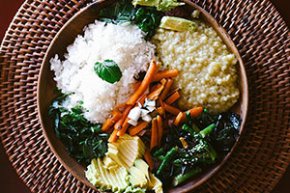
Ayurveda for Allergies
 Do you suffer from allergies in any way? Perhaps you’ve come to dread the arrival of springtime because of the degree to which your allergies overtake your life. Unfortunately, many of us feel utterly helpless when it comes to changing our allergy experience in any real or meaningful way. But because they so commonly flare up at this time of year, spring is an especially poignant time to explore the Ayurvedic approach to allergies—which, thankfully, offers a unique perspective and a number of effective allergy remedies for springtime and beyond. We sincerely hope that these insights will help you and your loved ones find some much-deserved allergy relief.
Do you suffer from allergies in any way? Perhaps you’ve come to dread the arrival of springtime because of the degree to which your allergies overtake your life. Unfortunately, many of us feel utterly helpless when it comes to changing our allergy experience in any real or meaningful way. But because they so commonly flare up at this time of year, spring is an especially poignant time to explore the Ayurvedic approach to allergies—which, thankfully, offers a unique perspective and a number of effective allergy remedies for springtime and beyond. We sincerely hope that these insights will help you and your loved ones find some much-deserved allergy relief.
According to Ayurveda, an allergy is the result of a particular substance (the allergen) aggravating a specific dosha: vata, pitta, or kapha. Ayurveda therefore classifies allergies according to dosha, depending on which one(s) are triggered in each individual case. And yes, it’s possible for more than one dosha to be involved. More often than not, allergic reactions are reflective of our constitutions. In other words, a pitta-predominant individual is more likely to develop a pitta type of allergy while a kapha-predominant individual is more likely to suffer from a kapha type of allergy. This is especially true when our predominant doshas are aggravated. However, it is also possible to develop allergies that do not correlate with our constitutions. For instance, a vata-predominant person with elevated pitta, might manifest a purely pitta type of allergy. Whatever the case, let’s start by differentiating the three types of allergies identified in the Ayurvedic tradition.
 Allergies and the Three Doshas
Allergies and the Three Doshas
Below, you will find a description of allergies according to dosha: vata-type, pitta-type, and kapha-type—each with a brief exploration of the classic symptoms, potentially aggravating foods, and a short list of dosha-specific remedies. This information provides an important foundation. But there is no need to feel bogged down by these details because, next, we’ll look at a number of Ayurvedic tools that can reduce allergy symptoms—regardless of their origins.
Vata-Type Allergies
Vata types of allergies are often experienced in the digestive tract with symptoms such as burping, bloating, digestive discomfort, gas, gurgling intestines, vague abdominal pain, and intestinal colic. They can also include symptoms of constriction such as wheezing or headache, as well as sneezing, ringing in the ears, joint pain, sciatica, muscle twitching or spasms, insomnia, nightmares, and other vata-type discomforts.
Possible Correlation with Vata-Aggravating Foods
Vata imbalances can cause food sensitivities to raw foods, many beans (black beans, pinto beans, adzuki beans, etc.), and certain animal proteins, like pork. These foods can also aggravate vata types of allergies.
Balancing Vata
When vata is aggravated, it is important to slow down, keep warm, stay hydrated, and eat a vata-pacifying diet. Vata types of allergies are often soothed by ginger or licorice teas with an added drop of ghee to counteract vata’s dry quality. Healthy Vata and Vata Digest can also be supportive. Because the seat of vata is in the colon, one very effective therapy for balancing vata-type allergies is a Dashamula tea enema (basti). This therapy is best learned from an experienced Ayurvedic practitioner.
 Pitta-Type Allergies
Pitta-Type Allergies
Pitta types of allergies usually occur when the hot, sharp qualities of an allergen come in contact with the skin and then subsequently enter the bloodstream. Pitta-type allergies are therefore often skin-based reactions such as hives, rashes, itching, allergic dermatitis, eczema, and may also involve bloodshot eyes. In the GI tract, pitta allergies can cause heartburn, acid indigestion, stomach upset, nausea, or vomiting. Pitta-type allergies can also induce hot flashes.
Possible Correlation with Pitta-Aggravating Foods
High pitta can cause food sensitivities or allergies to hot, spicy dishes, citrus fruits, sour fruits, tomatoes, potatoes, eggplant, and fermented foods. These foods can also aggravate pitta types of allergies.
Balancing Pitta
When pitta is high, it is best to keep cool, to avoid exercising at midday, and to eat a pitta-pacifying diet. Healthy Pitta and Pitta Digest can also be supportive. Because pitta has such an affinity for the blood, purifying the blood is often tremendously helpful. Simply donating blood can pacify pitta in much the same way that traditional bloodletting does. Herbal formulas that specifically support the blood can also be very effective; try Blood Cleanse or a mixture of Manjistha and Neem: mix one part Manjistha with one part Neem; take ½ teaspoon of the mixture in warm water three times per day, after meals.
For the Skin
To balance and soothe the skin, try any of the following therapeutic strategies:
Fresh Cilantro Juice
Drinking cilantro juice cools and calms the entire system and promotes optimal health, comfort, temperature, and fluid balance in the skin. Simply place a handful of fresh cilantro in a blender with about ⅓ cup water and blend. Strain the pulp and drink the juice.
Cilantro Pulp
Applying fresh cilantro pulp directly to the skin offers more localized soothing support and can be used in conjunction with cilantro juice. The pulp can be applied to the skin after it has been separated from the juice.














